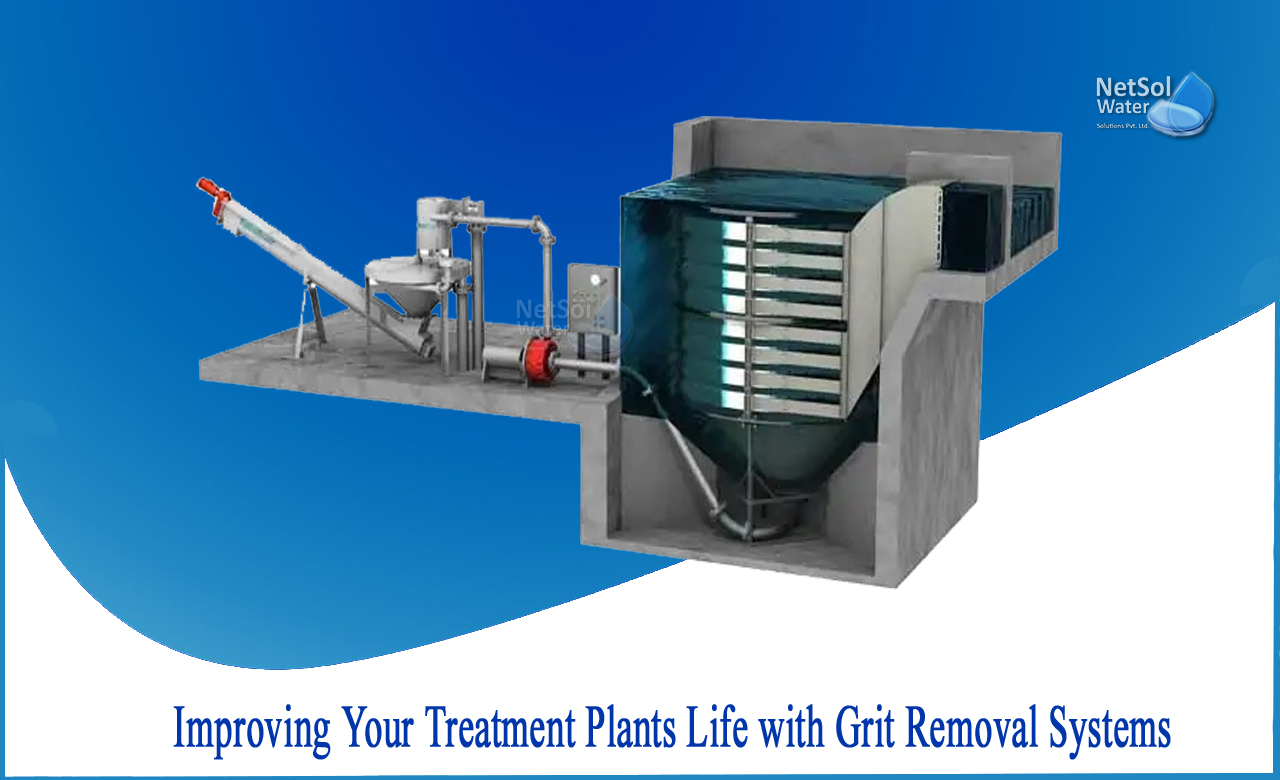Why required Grit removal systems in Treatment plants?
Coffee grinds, sand, gravel, and minuscule bone fragments are examples of abrasive materials. Machines that can wash, gather, and remove gritty particles are required to remove them from wastewater treatment plant equipment’s. Gritty solids in wastewater and stormwater runoff affect the functioning of valves and pumps. The grit also accumulates in lines, channels, and tanks, reducing flow rates and capacity. A grit removal system is required to alleviate these costly concerns. Grit removal systems filter wastewater and storm runoff as it enters a treatment facility.
The water is stirred or pumped with a vortex, aerated, or circulating system. The goal for grit is to drop to the bottom, where it will be pushed through equipment and washed before being carried to containers for removal. Some various types are -
1: Aerated grit chambers–It pumps air into the water to mix it up so that heavy grit sinks to the bottom in.
2: Cyclonic Grit Chambers - Wastewater enters the chamber in such a way that it creates a cyclone, pushing heavier grit to the bottom.
3: Horizontal flow chambers - Wastewater flows horizontally in horizontal flow chambers, allowing heavier gritty debris to sink.
4: Vortex grit chambers - Paddles swirl the wastewater in Vortex Grit Chambers, allowing oils and fats to rise to the surface while grit sinks to the bottom.
How does grit removal improve plant bottom line?
Grit and other solids, such as sugar, sand and silt, are components of wastewater lowering efficiency, and causing abrasion damage, wear and tear, and thus the wastewater treatment plant requires more cleaning, maintenance, and repair.
Showers, laundry, dental hygiene, dishwashing, and toilet flushes use up to 100 gallons of water per person every day. Thousands of people live in the vicinity of a wastewater treatment plant. A wastewater treatment facility treats roughly three million gallons of wastewater each day on average. The average amount of grit in those three million gallons is upwards of 45 cubic feet. It can cause significant damage if it isn't filtered out early in the process.
The repairs will not only necessitate the purchase of new components, but they will also necessitate machine downtime. This will reduce the plant's financial component. Effective grit removal prevents abrasive particles and sand from entering other processes, eroding expensive equipment, and accumulating throughout a treatment facility.
Some of the ways by which it improves plant bottom line are:
· A relatively low putrescible organic content.
· Consistent removal effectiveness over a wide flow range.
· The performance of downstream components could be affected.
Advantages of Grit removal systems
Air is used to flow wastewater vertically in the some Grit Removal Systems, allowing grit to settle to the bottom of the grit hopper. An airlift pump, a dry-pit vortex pump, or a self-priming pump is used to remove grit. The following are some of the advantages:
1: Aeration aids in the start-up of the treatment process.
2: The cost of energy is lower.
3: Because the grit is separated and dewatered at the same time, it comes out cleaner.
4: Maintenance is simple because no parts are submerged and no buckets, chains, or augers are required.
In-line grit collection
Flow rates of 0.25 to 6 million gallons per day are feasible with the In-Line Grit Collection. The wastewater enters one end of the tank, flows under a baffle, and then passes over a weir. Grit settles to the bottom of the tank, where it is dewatered and moved to an awaiting dumpster by a dewatering screw. The following are some of the advantages:
1: It's a grit-removal technology that's simple to set up and affordable.
2: Due to grit, the screw conveyor does not wear out, and a direct drive speed reducer reduces maintenance and repair expenses.
Conclusion
This is a system that consumes very little energy and requires little upkeep. This last feature is extremely important for wastewater treatment plants that have a lot of intricate technologies. It's low-cost, effective, throughout a wide flow range, and can be delivered as a complete grit capture and cleaning system.
Netsol Water is Greater Noida-based leading water & wastewater treatment plant manufacturer. We are industry's most demanding company based on client review and work quality. We are known as best commercial RO plant manufacturers, industrial RO plant manufacturer, sewage treatment plant manufacturer, Water Softener Plant Manufacturers and effluent treatment plant manufacturers. Apart from this 24x7 customer support is our USP. Call on +91-9650608473, or write us at enquiry@netsolwater.com for any support, inquiry or product-purchase related query.



